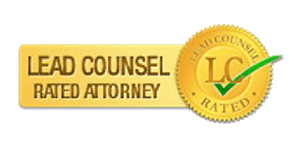With more than 40 years defending the toughest cases in federal courts, Robert M. Helfend has the experience it takes to fight your charges. Call the Helfend Law Group at 800-834-6434 for your free case review.
If someone brings illegal drugs into the United States, they can be charged with the federal crime of “importing a controlled substance.”

Because importation involves crossing the U.S. national border, it is investigated and prosecuted by the federal government. And like all federal crimes, it has very steep penalties.
Depending on the drug and the amount of the drug brought into the United States, first-time offenders can face fines in excess of $1 million and penalties of more than 20 years. Ever since the early days of the “War on Drugs,” the federal government has put a great deal of emphasis on finding, prosecuting and making an example of so-called drug smugglers.
This means that if you have been accused of illegally bringing a controlled substance into the United States, the stakes are high and a skilled defense attorney can help you retain your freedom. Robert M. Helfend is a SuperLawyers and National Trial Lawyers Top 100 rated federal defense attorney. Call 24/7 for your free consultation – 800-834-6434.
Understanding the Controlled Substances Act
Before we get into the specifics of importation, it’s important to understand the Comprehensive Drug Abuse Prevention and Control Act of 1970. Now commonly referred to as the Controlled Substances Act, it is the backbone of drug-related regulation in the United States.
Found under 21 U.S.C. § 952, the act governs the manufacture, importation, possession, use and distribution of:
- Narcotics
- Stimulants
- Depressants
- Hallucinogens
- Anabolic steroids
- Other chemicals
Any chemical that falls under the umbrella of the Controlled Substances Act is defined as a controlled substance.
The intent of the Act is to mitigate the abuse and unlawful distribution of these substances, thus protecting public health and safety by ensuring they are rendered adequate.
The Drug Enforcement Agency (DEA) is responsible for enforcing the CSA. The DEA prosecutes violations of drug laws at the federal level.
The CSA primarily focuses on the categorization of controlled substances into five distinct schedules. These schedules, ranging from I to V, categorize substances based on their medicinal value, potential for abuse, and safety or risk of dependency. Importantly, the importation of controlled substances is only permissible for legitimate medical and scientific purposes, and the importers must provide the necessary documentation to substantiate their claim.
Controlled substance schedule classifications
Next, let’s dive deeper into the schedule system for classifying drugs. A drug’s “schedule” is determined based on its medical use and potential for abuse and dependence. The spectrum runs from Schedule I to Schedule V, with the latter representing the least potential for abuse.
Schedule I
Schedule I are drugs with no currently accepted medical use and a high potential for abuse, such as:
- Heroin
- LSD
- Marijuana
- Ecstasy
- Methaqualone
- Peyote
It’s very important to point out here that there’s a major difference between how marijuana is treated on the federal and state levels. Over the last few decades, the state of California has substantially relaxed its stance toward marijuana, while the federal government still lists it in the most serious category of controlled substances.
As we move down the schedules, the potential for abuse decreases and many substances are more likely to have therapeutic uses.
Schedule II
Schedule II substances have a high potential for abuse, which may lead to severe psychological or physical dependence. Examples of such substances include:
- Hydrocodone
- Cocaine
- Methamphetamine
- Methadone
- Oxycodone
- Fentanyl
- Adderall
You’ll notice that many of the substances that fall into Schedule II are frequently prescribed by doctors to manage pain symptoms. These have legitimate medical uses, but because of the risk of physical dependence, their possession and use is tightly regulated.
Schedule III
Schedule III substances, moving further down, carry a moderate to low potential for physical and psychological dependence. Examples of these substances include:
- Products with less than 90 milligrams of codeine
- Ketamine
- Anabolic steroids
- Testosterone
Schedule IV
Schedule IV substances are characterized by their low potential for abuse and low risk of dependence. These include:
- Xanax
- Soma
- Valium
- Ativan
- Tramadol
Schedule V
Schedule V substances, at the bottom of the spectrum, are primarily made up of preparations that contain limited quantities of specific narcotics. These substances, with the lowest potential for abuse, are used for antidiarrheal, antitussive, and analgesic purposes.
Some examples are:
- Cough preparations
- Lomotil
- Motofin
- Lyrica
The Controlled Substances Import and Export Act
The last piece of the puzzle is the Controlled Substances Import and Export Act. As part of the Comprehensive Drug Abuse Prevention and Control Act of 1970, it establishes guidelines for importing controlled substances for legitimate purposes.
The act generally prohibits the importation of controlled substances except for specific amounts necessary for medical, scientific or other acceptable uses as determined by the attorney general. Furthermore, entities wishing to import or export controlled substances must:
- Register with the attorney general
- Comply with defined procedures
- Be subject to oversight through DEA inspections
- Have foreign establishments certified by the attorney general.
There are, however, specific exceptions laid out in the act. These include compounds, mixtures, or preparations that contain controlled substances and certain roles such as agents, employees, carriers, warehousemen, and ultimate users under determined conditions. These exceptions are designed to ensure that the Act does not impede legitimate uses of controlled substances, while still providing robust safeguards against their misuse.
Penalties for unlawfully bringing a controlled substance into the United States
As we mentioned above, violating 21 U.S.C. § 952 can result in severe penalties. These penalties vary depending on the schedule of the drug and the amount involved. For a first-time offender, the penalties can include imprisonment, substantial fines or both.
Here are a few examples for different drug schedules:
Schedule I and II drugs
For importing these drugs, first-time offenders can face significant prison time. For example, importing a relatively small amount of heroin (100 grams or more) can result in a minimum of 5 years and up to 40 years in prison.
Larger quantities can lead to longer sentences, potentially up to life imprisonment. Fines can be up to several million dollars, depending on the amount and type of substance.
Schedule III drugs
Penalties for importing Schedule III substances are generally less severe than for Schedule I or II drugs but can still involve prison sentences (up to 10 years) and fines, depending on the quantity and specific circumstances.
Schedule IV and V drugs
The penalties for importing these substances are typically less severe than for higher schedules. For example, a first-time offender might face up to 5 years in prison for Schedule IV substances.
It’s important to note that these are general guidelines and actual sentences can vary widely based on specific circumstances, including the amount of the drug, the geographic area of importation and other factors considered by the court.
Additionally, if the importation results in death or serious bodily injury, or if the individual has a prior conviction for a drug offense, the penalties can be significantly increased.
How to fight unlawful importation charges
While facing charges for unlawful importation of controlled substances can be intimidating, you have options. These defense strategies broadly fall into two categories: challenging the prosecution’s evidence and proving a lack of intent to commit the crime.
Challenging evidence
One of the most effective defense strategies involves challenging the prosecution’s evidence. Rigorous examination of the evidence and police conduct is a fundamental part of this strategy, where procedural errors or mishandling by the police can undermine the prosecution’s case. A federal criminal defense attorney can:
- File a petition with the court to exclude evidence obtained illegally
- Play a critical role in the defense strategy
- Safeguard the client’s constitutional rights
Furthermore, casting doubt on the reliability and credibility of evidence, especially when the contraband was found in a mutually accessible location, can be pivotal in challenging the prosecution’s case. This rigorous investigation of the prosecution’s evidence is crucial in the legal defense process for those accused of importing controlled substances.
Proving lack of intent
Proving a lack of intent to import controlled substances is another vital defense strategy. For instance, providing evidence that an individual unknowingly had drugs placed in their possession can be pivotal in proving there was no intent to traffic drugs.
Simply being near drugs, like a passenger in a vehicle where drugs are found, doesn’t automatically imply the intent to import or smuggle drugs, particularly in the absence of knowledge about the drugs. Lack of intent can be substantiated by pointing out the absence of evidence, insufficient evidence or a misunderstanding of the accused’s knowledge regarding possession.
In some cases, attorneys may argue that controlled substances in the accused’s possession were meant for personal use as a means to counter claims of intention to import or traffic.
Skilled and aggressive defense for controlled substance importation charges
Given the severity of federal drug charges, if you or someone you know is facing charges for importation of a controlled substance, you need a great attorney. Not just anyone will do.
A knowledgeable defense attorney with a deep understanding of federal drug laws can use strategic ways to fight charges related to drug importation or exportation.
Robert M. Helfend, with over 40 years of experience defending the rights of the accused in Southern California, has successfully defended more than 4,000 criminal cases including a number of high-profile drug cases. He’s a National Trial Lawyers Top 100 Attorney, a Lead Counsel Attorney, a SuperLawyers Rated Attorney, an Expertise.com Top Attorney and an Expert Network Distinguished Attorney.
Call 800-834-6434 to schedule a free case review.
Published February 24, 2024.






